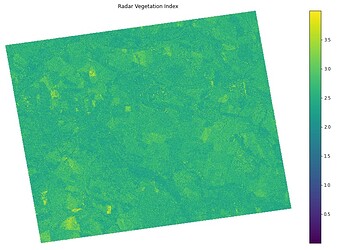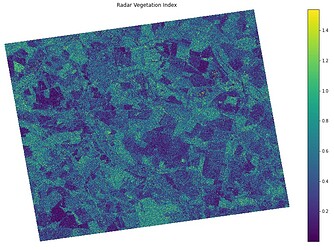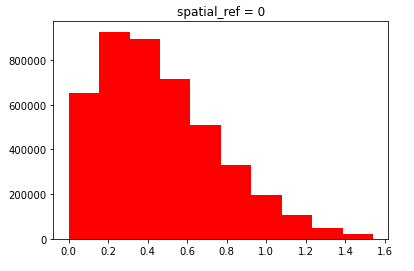Hi everyone,
I have created the Sentinel-1 GRD backscatter ratio based on the backscatter coefficients VV and VH gamma nought. Currently, I am planning to calculate the Radar Vegetation Index (RVI) based on the VV and VH polarisations. But I am facing the problems in calculations via different ways in python.
- In my first way, I just took the backscatter coefficients from the preprocessed Sentinel-1 GRD image and computed based on the formula suggested in this paper.
I used the following format
> ((4*abs(backscatter_pol[0]))/(abs(backscatter_pol[1])+abs(backscatter_pol[0])))
where backscatter_pol is the preprocessed image with gamma_VV and gamma_VH as bands which are in dB unit.
This is the obtained image.
The value ranges from 0 to 4.
- In my second way, I followed this article
rvi1 = (np.sqrt(((abs(backscatter_pol[1]))/(abs(backscatter_pol[1])+abs(backscatter_pol[0])))))*((4*abs(backscatter_pol[0]))/(abs(backscatter_pol[1])+abs(backscatter_pol[0])))
obtained result is
Here the value ranges from 0 to ~1.5 .
So, I have five questions
- Whether the values are correct are not for the Radar Vegetation Index based on the above suggested paper and article?
- Is it necessary that not to convert from linear to dB while preprocessing for RVI calculation?
- Is this the same case when using in SLC?
- What is the general range of the RVI? please let me know any literatures about the ranges.
- Is there any workflow in pyroSAR regarding the RVI? Because I haven’t seen the parameters of BandMaths operator in snap command-line. If there is any suggestion regarding the use of .xml file please let me know how to include it in my pyroSAR script.



